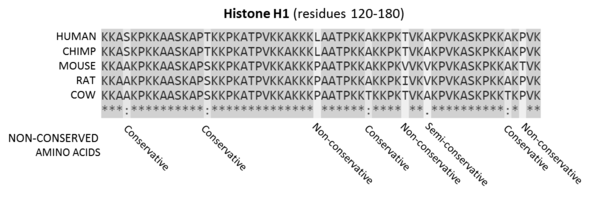Our website is made possible by displaying online advertisements to our visitors.
Please consider supporting us by disabling your ad blocker.
Segregating site
Segregating sites are positions which show differences (polymorphisms) between related genes in a sequence alignment (are not conserved).[1] Segregating sites include conservative, semi-conservative and non-conservative mutations.
The proportion of segregating sites within a gene is an important statistic in population genetics since it can be used to estimate mutation rate assuming no selection. For example it is used to calculate the Tajima's D neutral evolution statistic.

Sequences are the amino acids for residues 120-180 of the proteins. Residues that are conserved across all sequences are highlighted in grey. Below the protein sequences is a key denoting conserved sequence (*), conservative mutations (:), semi-conservative mutations (.), and non-conservative mutations ( ).[2]
- ^ Fu, YX (Oct 1995). "Statistical properties of segregating sites". Theoretical Population Biology. 48 (2): 172–97. doi:10.1006/tpbi.1995.1025. PMID 7482370.
- ^ "Clustal FAQ #Symbols". Clustal. Retrieved 8 December 2014.
Previous Page Next Page


